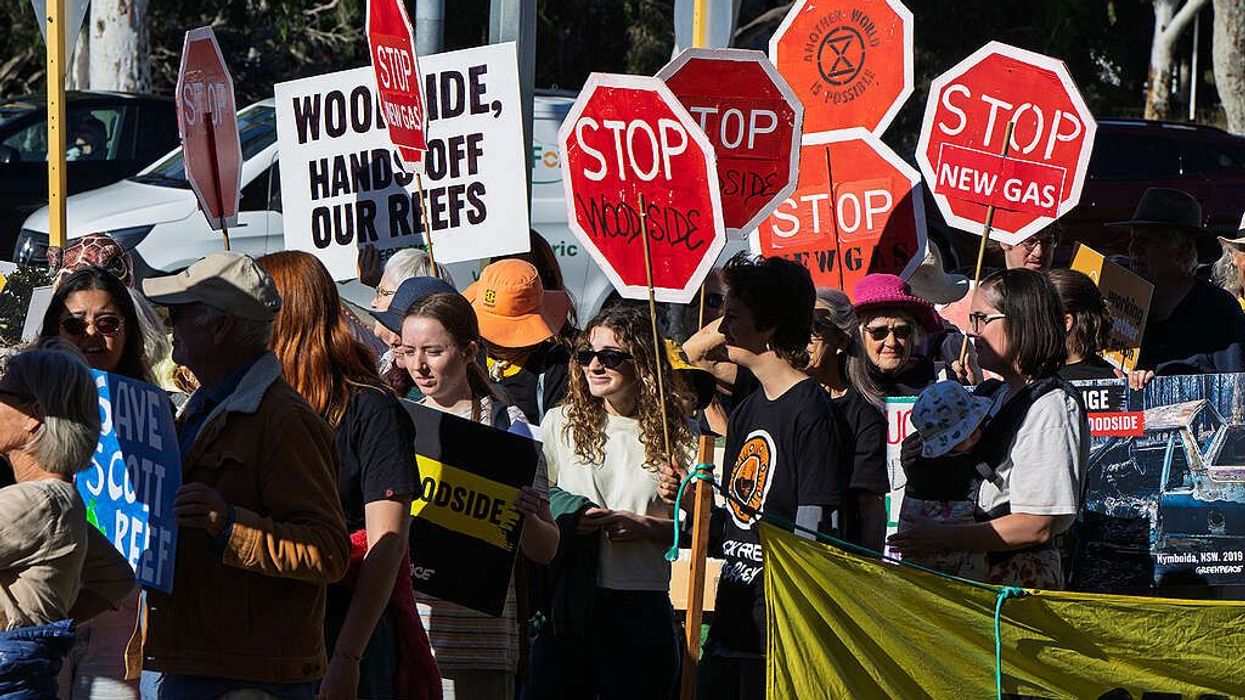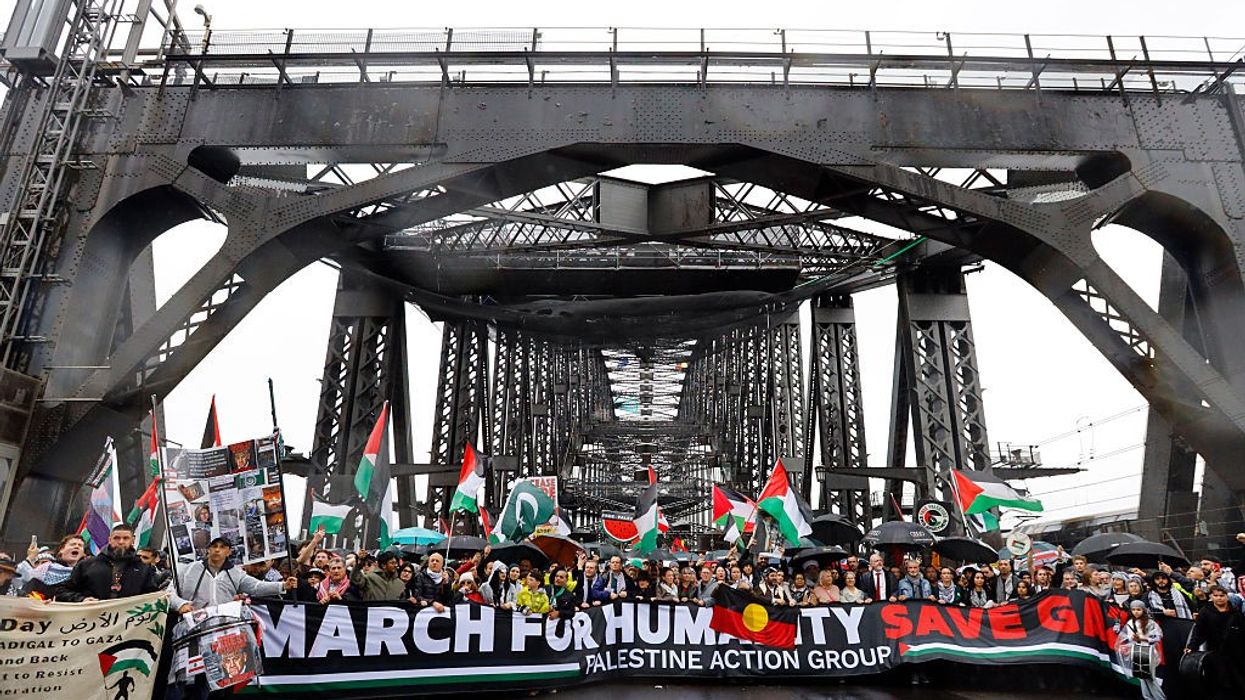Dispatches From the Winter of Our Discontent Against Woodside Energy's Carbon Bomb
It's been a winter in which our elected representatives still give primacy to commercial interests and the economy over the environment and cultural heritage of Western Australia.
“This year was a year of change, a year when secret fears come into the open, when discontent stops being dormant and changes gradually to anger. It wasn’t only in me… And it wasn’t only in the nation; the whole world stirred with restlessness and uneasiness as discontent moved to anger and anger tried to find an outlet in action, …” (John Steinbeck, The Winter of Our Discontent, 1961)
1 June
Winter 2025 begins with a still, sunny 23°C day in Perth, Western Australia (WA). It’s a reprieve from disgruntlement, discontent, and alarm about the state of the world, especially the genocide in Gaza and long war in Ukraine and, closer to home, the Australian environment minister’s "carbon bomb."
Four days earlier, and only two weeks after being sworn in as Australia’s new Environment Minister, Murray Watt announced his snap decision in favour of Woodside Energy’s bid to keep burning gas until 2070 at its North West Shelf (NWS) plant on the Burrup Peninsula in WA.
I’m still hoarse from chanting “Dis-rupt Bur-rup Hub!” to the rhythmic beat of Drummers for Climate Action at the dusk snap rally outside Parliament House the night before Watt gives conditional approval to Woodside’s "carbon bomb"—a fossil fuel project that will emit more than 1 billion tonnes of carbon pollution.
At home, it’s been a winter in which we witness the wanton destruction wrought upon WA’s native jarrah forests, endangered black cockatoos, fragile coral reefs, and ancient Indigenous rock art by rapacious mining companies.
Never mind the 500,000+ signatories to Greenpeace Australia’s petition to stop Woodside’s Burrup Hub expansion, the hundreds who called Watt’s office, and the thousands who emailed him to voice their objections in the week before his decision. Elections and environment ministers come and go, but none will stop the Woodside Energy juggernaut—Australia and WA’s second worst fossil fuels polluter, headed by American “Methane Meg” O’Neill, formerly of ExxonMobil.
3 June
Federal Cabinet meets in Perth, for the first time since the government was reelected in a landslide and since the March State election returned a Labor Government. Prime Minister (PM) Anthony Albanese responds to journalists’ questions about the NWS extension by emphasising the Government has a target for net-zero emissions (as if approving one of the top 10 fossil fuel polluting projects in the world will help us reach net zero by 2050). The PM sidesteps a question on community anxiety about the environmental impacts by saying he and the people of Karratha “support jobs and economic activities.” The NWS employs 900 people; 280 live locally in Karratha.
4 June
Conservation Council of WA holds another snap rally to protest Watt’s decision, coinciding with Cabinet’s visit. The invitation stipulates BYO “pots and pans and something to hit them with” (the pots and pans, that is, not the Cabinet ministers).
6 June
Three climate activists are fined $10,000 each for trying to take a “stink bomb” into Woodside’s 2023 AGM.
8 June
Premier Roger Cook defends WA’s rising greenhouse gas emissions since 2005, and the NWS extension, with the dubious claim that gas exports from the NWS help other countries decarbonise; spinning Woodside’s line.
20 June
I walk along the grassy banks of the Derbarl Yerrigan-Swan River between the new Boorloo (Perth) Bridge at the causeway and Matagarup (one-leg or knee deep) Bridge at the Optus Stadium, two kilometres upriver. The Whadjuk Noongar people know this place as Joorolup, from the time when there were jarrah forests here.
The Indigenous names for these new bridges co-exist with the naming rights of on-the-nose corporate giants that predominate our public infrastructure in this mining State. The Optus (Yes!) Stadium precinct includes the Chevron Parkland and BHP Boardwalk and Amphitheatre; Chevron and BHP are ranked, respectively, first and fifth of Australia’s "Dirty Dozen" carbon polluting companies.
29 June
For one week of winter, my husband and I go "down south." We’re 400 kilometres away in Walpole walking on the Bibbulmun Track through the tall Karri and Tingle forest—wilderness preserved by the WA Labor government’s decision 25 years ago to cease logging in old-growth forests.
1 July
Flinders Bay, Augusta: There’s a newborn Southern right whale calf with its mother. The marine biologist on the boat says it is unusual to see a calf so early in the whale migration season and a calf born in these cold waters is unlikely to survive to adulthood. It’s a bittersweet reminder of the fragility of our endangered species.
2 July
Driving home from the southwest to Perth on the Wilma Wadandi highway, we cross the Preston River and see the billowing smokestack of Alcoa’s 40 years old Wagerup Alumina Refinery to the east.
WA’s third largest greenhouse gas emitter, Alcoa, like Woodside, has a voracious appetite for expansion. It wants to clear another 7,500 hectares of endemic jarrah-marri forest for bauxite mining—3,500 times the size of the 60,000-seat Optus Stadium.
Alcoa’s expansion would destroy up to 144,500 potential nesting trees for endangered black cockatoos—trees that can take up to 150 years to grow suitable hollows for cockatoos’ breeding, according to Birdlife Australia. Cockatoos’ foraging habitat will be lost for up to 11 years, at a time when starving Carnaby’s cockatoos are already being admitted to Perth Zoo for treatment.
The State’s Environmental Protection Authority received a record 59,000 public submissions on Alcoa’s proposal. So, will WA’s new environment minister halt the destruction of our native forests and endangered cockatoos’ habitat and food sources or will he enable their extinction, accelerated by an American-owned aluminium company?
10 July
A Disrupt Burrup Hub activist is fined for blocking access to Woodside’s NWS gas plant; the judge rejects her “climate emergency” defence.
12 July
News from Paris: Last night UNESCO approved Murujuga for World Heritage listing in recognition of its cultural value. Emissions are already damaging the ancient Indigenous rock engravings at Murujuga, adjacent to the NWS, according to eyewitness and measured evidence by local and eminent archaeologists. Minister Watt says he’s put the onus on Woodside to protect the one million Murujuga engravings, but how?
World Heritage listing should force the Government to protect the rock art to a higher standard, but will it?
12 August
World Heritage listed Ningaloo Reef and other reefs along the WA coastline are casualties of the worst marine heatwave ever recorded. It’s sad to see the extensive coral bleaching, caused by heat stress, and a “raging fever” in the case of Ningaloo which experienced temperatures up to 4°C warmer than usual. The Australian Institute of Marine Science attributes the damage to carbon-emissions induced climate change.
Obviously, World Heritage listing does not protect reefs (or rock art) from fossil fuels. That requires governments to stop recklessly approving new coal and gas developments. Will feverish and bleached corals on a possibly terminally-ill Ningaloo Reef give our governments pause for thought about Woodside’s plan to sink 50 gas wells near Scott Reef off the Kimberley coast?
17 August
Requiem for the Reefs held outside the Maritime Museum in Fremantle, which has an Open Day sponsored by Woodside the Reef-Wrecker! About 100 of us, including 3 of the 4 Greens members who now hold the balance of power in the WA Parliament, gather to mourn the bleaching of our once-colourful reefs. Voices for Climate sing; a violinist plays a lament at the edge of a mock reef; we hold up placards and chant, “Save Ningaloo. Save Scott Reef.”
22 August
In a fitting end to our Woodside winter of discontent, another court case goes Woodside’s way. Doctors for the Environment Australia loses its Federal Court case against the approval of Woodside’s Environment Plan for its Scarborough gas project—a floating platform from which to drill 21 wells 375 kilometres off the coast of the Pilbara with a pipeline to bring the gas onshore. Back in 2021, Woodside wanted to dump a 2,500-tonne mooring from a decommissioned floating oil rig next to Ningaloo.
31 August
Winter ends as it began with a deceptively sunny warm 22°C day in Perth.
A winter in which the world’s woes worsened. Israel continues bombing Gaza, and famine sets in. A winter in which Israel bombed Iran, Syria, and Lebanon. A winter in which America bombed Iran’s nuclear facilities, and Iran fired missiles at the US military base in Qatar. A winter in which Russia continues its military invasion of Ukraine and still refuses peace talks. A dark violent winter.
At home, it’s been a winter in which we witness the wanton destruction wrought upon WA’s native jarrah forests, endangered black cockatoos, fragile coral reefs, and ancient Indigenous rock art by rapacious mining companies. A winter in which our elected representatives still give primacy to commercial interests and the economy over the environment and cultural heritage.
12 September
Wildflowers bloom on the banks of the Derbarl Yerrigan, and cygnets bob on its choppy waters on this windy spring day.
Australia’s environment minister confirms approval of Woodside’s NWS extension.
Winter is over, but our discontent lingers and deepens into anger.


